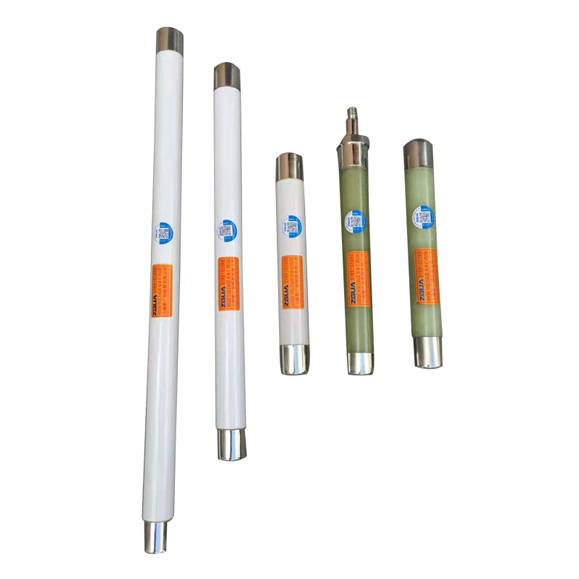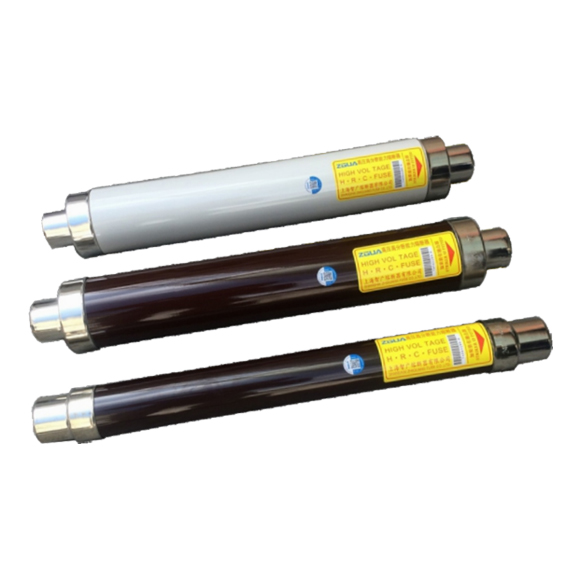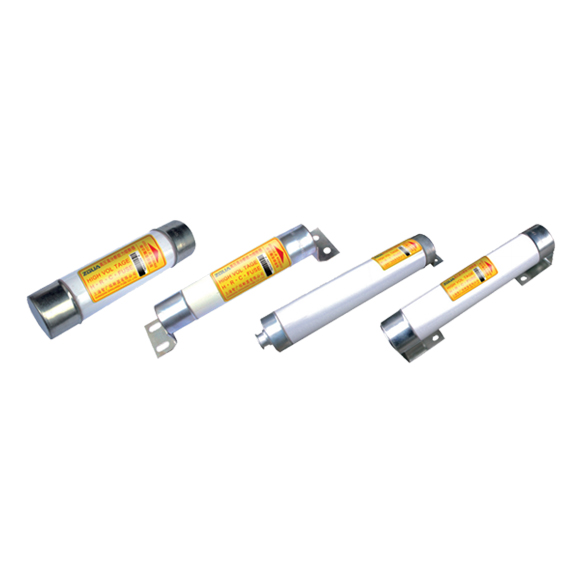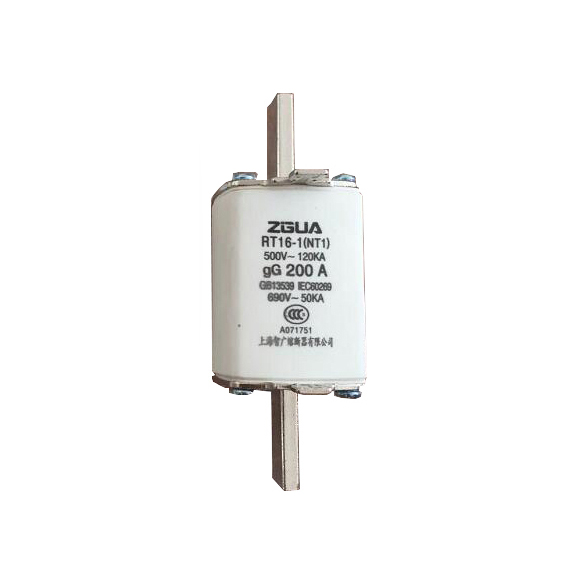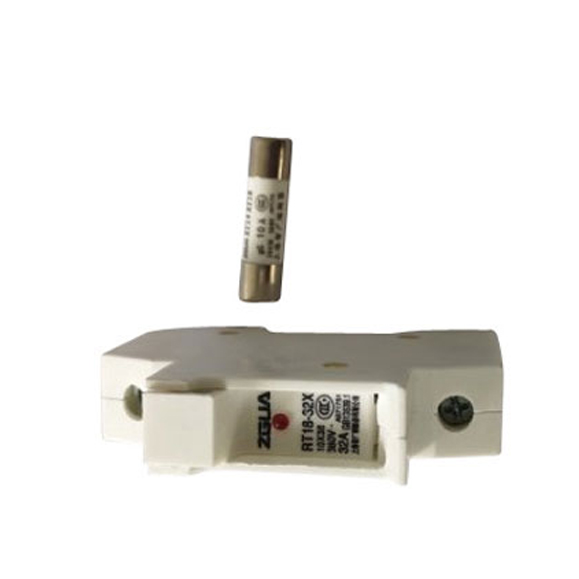Describe the structure, working principle and types of high-voltage fuses
A high-voltage fuse is a key device used to protect the power system. Its function is to automatically cut off the current when an overload or short circuit occurs in the circuit to prevent damage to power equipment and lines. According to their structures and working principles, high-voltage fuses can be divided into different types to adapt to different working environments.
High voltage fuse structure
The structural components of high-voltage fuses mainly include melt, fuse tube, contact conductive part, pillar insulator, and base. The description of each structural component is as follows:
Melt:
It is the core part of the fuse. It is made of good conductors such as silver or copper, and some fusible alloys are usually welded on it to improve its sensitivity. The shape and size of the melt determine the current rating and current limiting characteristics of the fuse. The melt will not melt during normal operation, but will quickly heat up and vaporize when overloaded or short-circuited, forming an arc and cutting off the circuit.
Fuse tube:
It is the shell of the melt. It is made of heat-resistant insulating material and has an arc-extinguishing function when the melt melts. The fuse tube is usually filled with fine-grained materials used for arc extinguishing, such as quartz sand. The fine-grained material can absorb the energy of the arc, divide and cool the arc, and generate a large amount of gas pressure to deionize the arc and extinguish it quickly.
Contact conductive parts:
It is a metal component that connects high-voltage lines and supports insulators. It is usually made of copper or copper alloy and has good electrical conductivity and mechanical strength. Contact conductive parts should ensure good contact with lines and insulators and be able to withstand mechanical and electrical stresses during normal operation and faults.
Support insulators:
It is an insulating component that supports and fixes the contact conductive part and the base. It is usually made of materials such as ceramics or fiberglass-reinforced plastics and has good insulation properties and weather resistance. Support insulators should ensure sufficient insulation distance from contacting conductive parts and be able to withstand mechanical and electrical stresses during normal operation and failure.
Base:
It is a fixed component installed on a high-voltage switch cabinet or other equipment. It is usually made of materials such as cast iron or steel plates and has good mechanical strength and corrosion resistance. The base should ensure a secure connection to the supporting insulator and be able to withstand the mechanical and electrical stresses of normal operation and failure.
Working principle of high voltage fuse
A high-voltage fuse is composed of a fuse and two electrodes. When the current exceeds the current that the fuse can withstand, the fuse will be heated and blown, thereby cutting off the circuit and preventing damage to the circuit due to excessive current.
High voltage fuse types
According to different arc extinguishing media, it can be divided into the following types:
(1) Oil circuit breaker
A circuit breaker that uses oil as the arc-extinguishing medium is called an oil circuit breaker; in addition to being an arc-extinguishing medium, oil also serves as the insulation after contact breaking and as the insulating medium between the live part and the grounded shell is called a multi-oil circuit breaker; oil only As the arc extinguishing medium and the insulating medium after the contact is broken, the insulation between the live part and the ground uses porcelain or other media, which is called an oil-less circuit breaker.
(2) Vacuum circuit breaker
A circuit breaker that utilizes the high dielectric strength of a vacuum to extinguish arcs is called a vacuum circuit breaker.
(3) Sulfur hexafluoride (SF6) circuit breaker
A circuit breaker that uses SF6 gas with excellent arc extinguishing performance and insulation performance as the arc extinguishing medium is called a sulfur hexafluoride circuit breaker.
(4) Compressed air circuit breaker
Circuit breakers that use compressed air as an arc extinguishing medium are called compressed air circuit breakers. In addition to being an arc extinguishing medium, compressed air also serves as an insulating medium after the contacts are disconnected.
(5) Magnetic blown circuit breaker
A circuit breaker that utilizes the principle of slit arc extinguishing relies on electromagnetic force to blow the arc and blows the arc into the slit for cooling and extinguishing the arc, is called a magnetic blown circuit breaker.
Summarize
A high-voltage fuse is a very important power protection device and is widely used in power systems. The correct selection and use of high-voltage current-limiting fuses can protect the safety of equipment and personnel, and improve the stability and economy of the power system.

 English
English 中文
中文 Pусский
Pусский Français
Français Español
Español
